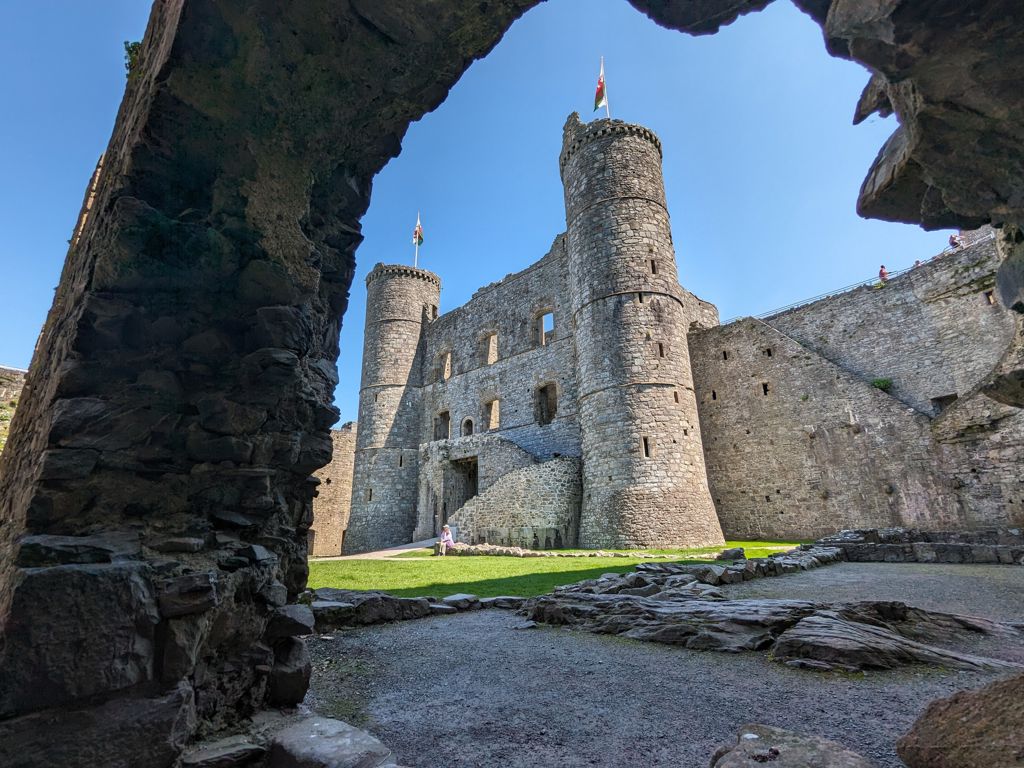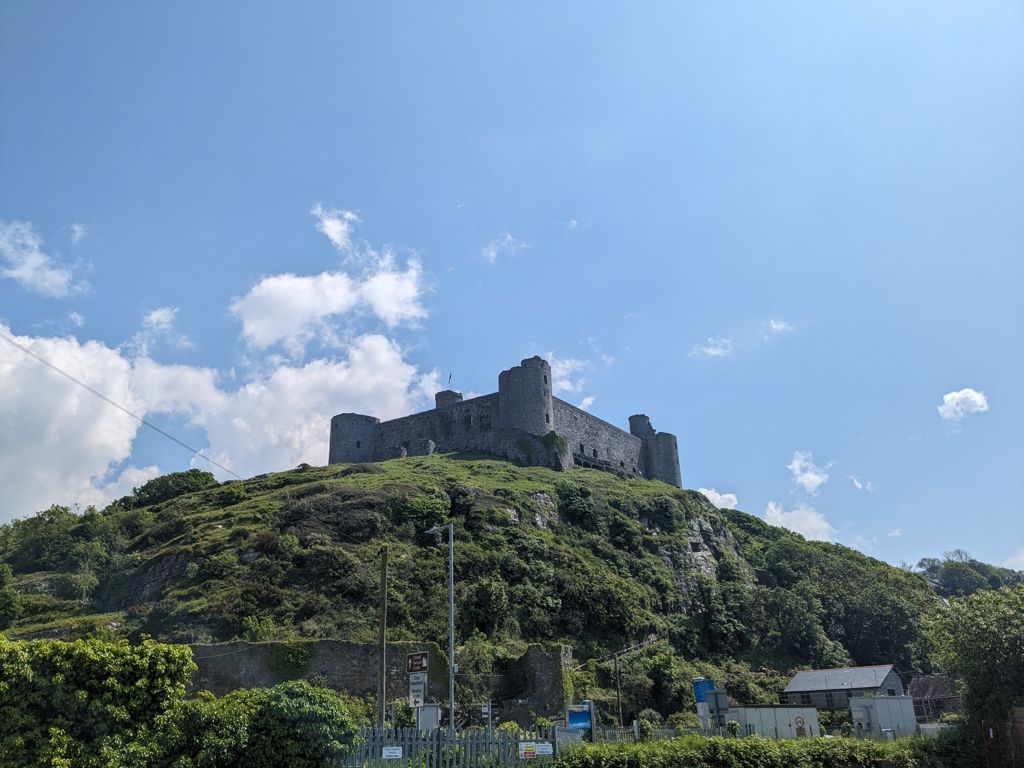Harlech Castle

Harlech Castle stands as a monumental testament to medieval military architecture, perched dramatically atop a rocky crag in Gwynedd, Wales. Its history is rich, marked by centuries of warfare, conquest, and cultural significance.
Click here to watch our video exploring Harlech Castle and discover its history.
- Region
- North Wales, Wales
- Period
- 13th Century
- Type
- Medieval Castle
- Condition
- Ruin - Some Major Stonework Remains
- Ownership
- Cadw
- Access
- Public - Admission Charge
Edward I vs The Welsh
Following many years of tensions between the English and Welsh, Edward I unleashed his first colossal invasion of Wales in 1277. Facing an overwhelming English army, Llywelyn the Last recognised the slim chances of victory and chose to accept the terms set out in the Treaty of Aberconwy. These terms significantly reduced Llywelyn's territorial holdings, yet he retained the prestigious title of Prince of Wales.
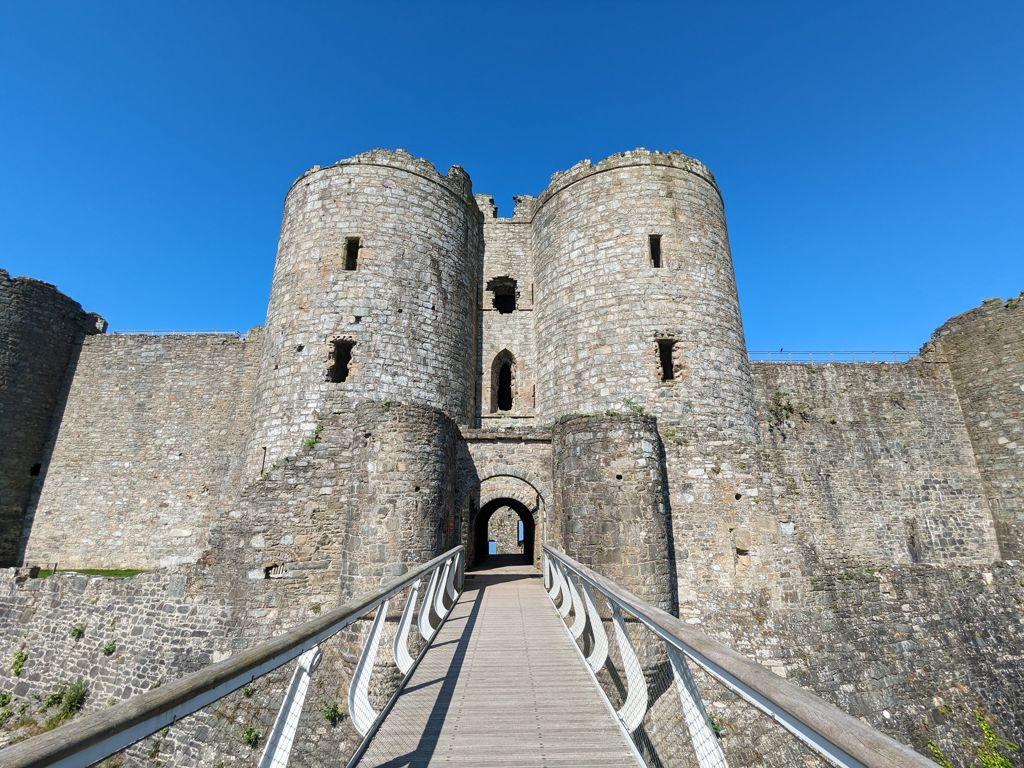
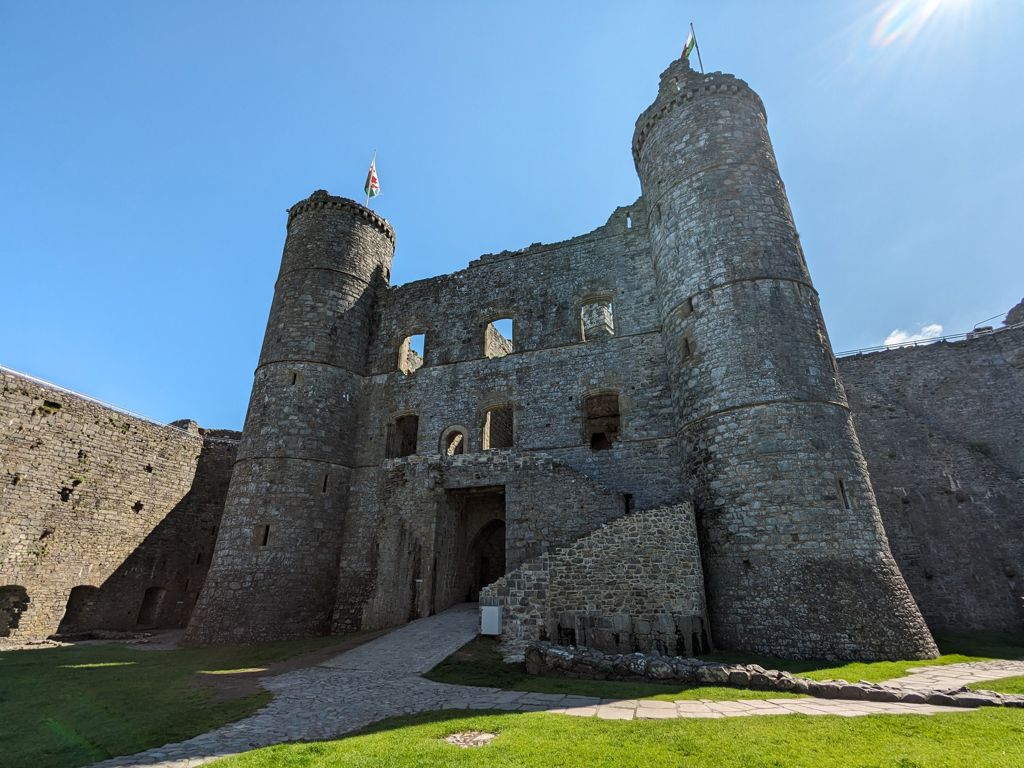
In 1282, conflict erupted once more following a rebellion led by Llywelyn's brother, Dafydd, in North Wales. Despite having previously aligned himself with the English and fought against Llywelyn, Dafydd had become disenchanted with the rewards he received from Edward I.
In December 1282 Llwelyn was killed, providing Edward with the chance to bolster his forces and seize Dolwyddelan Castle, a stronghold of Welsh resistance. By June 1283, Dafydd was apprehended and transported to Shrewsbury, where he faced execution, marking the completion of Edward's conquest of Wales.
Edward I's Ring of Iron
After Edward's successful conquest of Wales, his focus shifted to maintaining control over the region. To achieve this, he initiated the construction or renovation of a network of fortifications famously known as the "Iron Ring of Castles." Primarily situated in North Wales, the area known for its staunch Welsh resistance.
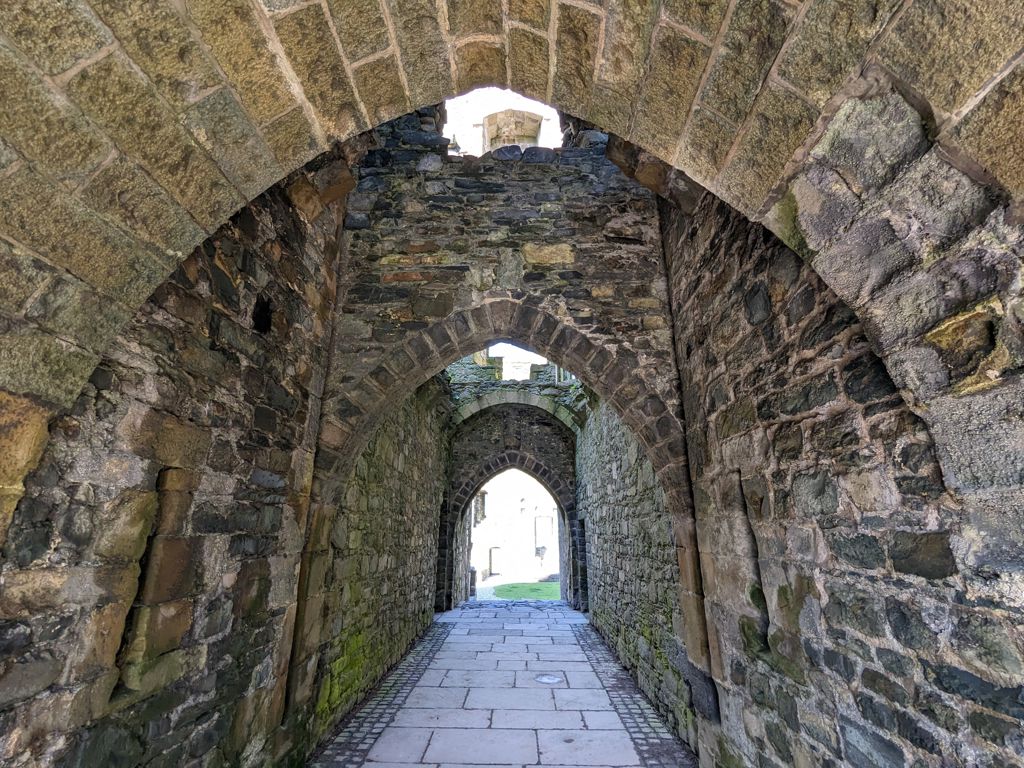
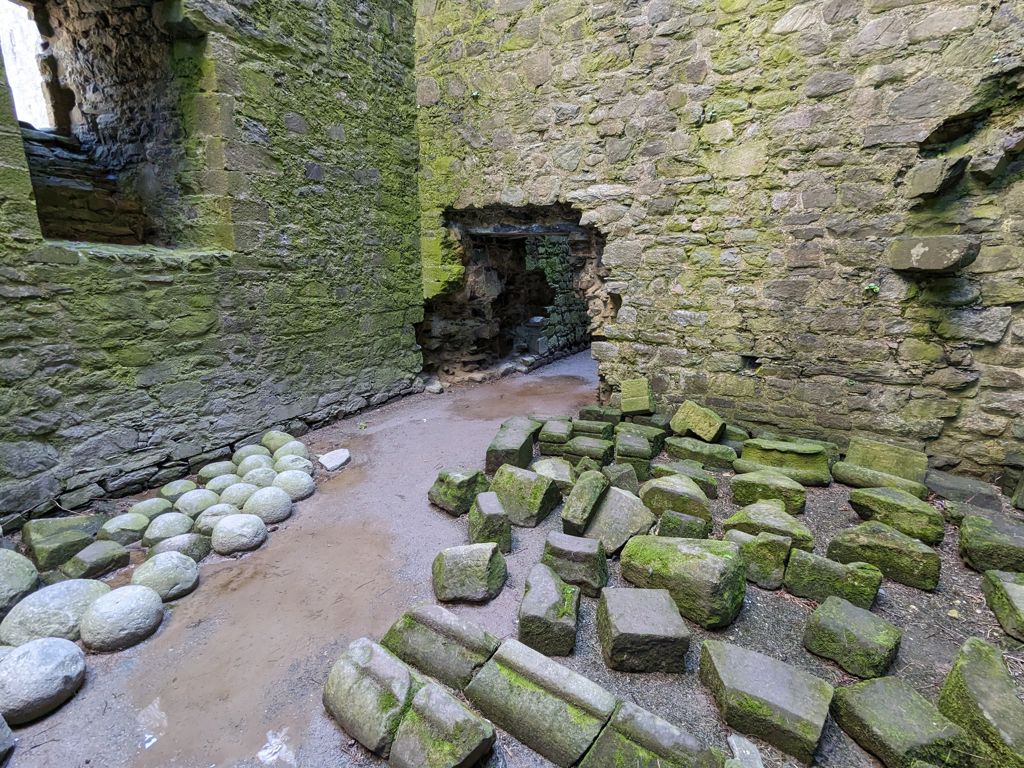
Construction
In 1282, construction of Harlech Castle began under the direction of the master architect James of St. George, whose expertise was instrumental in bringing Edward I's vision of a formidable fortress to life. James also oversaw the construction of Edward's other great castles in Wales, including Conwy, Caernarfon, and later, Beaumaris.
The site chosen for Harlech Castle was naturally strategic, perched atop a rocky crag beside the Irish Sea - which, at the time, reached right up to its base - and backed by the rugged mountains of Snowdonia. Though smaller than many of Edward I's other castles, Harlech made up for its modest size with its formidable design. Built to withstand prolonged sieges and direct assaults, it featured thick stone walls, imposing towers, and a range of defensive elements including arrow slits, murder holes, and a strong gatehouse.
Harlech Castle features a concentric design, consisting of an inner and outer ward. The outer ward is encircled by strong curtain walls and defensive towers, creating a formidable first line of defence around the inner ward. One of Harlech's most ingenious features lies on the western side - the famous "Water Gate." This secret access point included a long, steep staircase of around 1,000 steps (now partially eroded), descending the cliff to the sea. It allowed supplies and reinforcements to be delivered by boat during sieges - an advantage that proved critical during the siege in the Wars of the Roses, which we'll explore later.
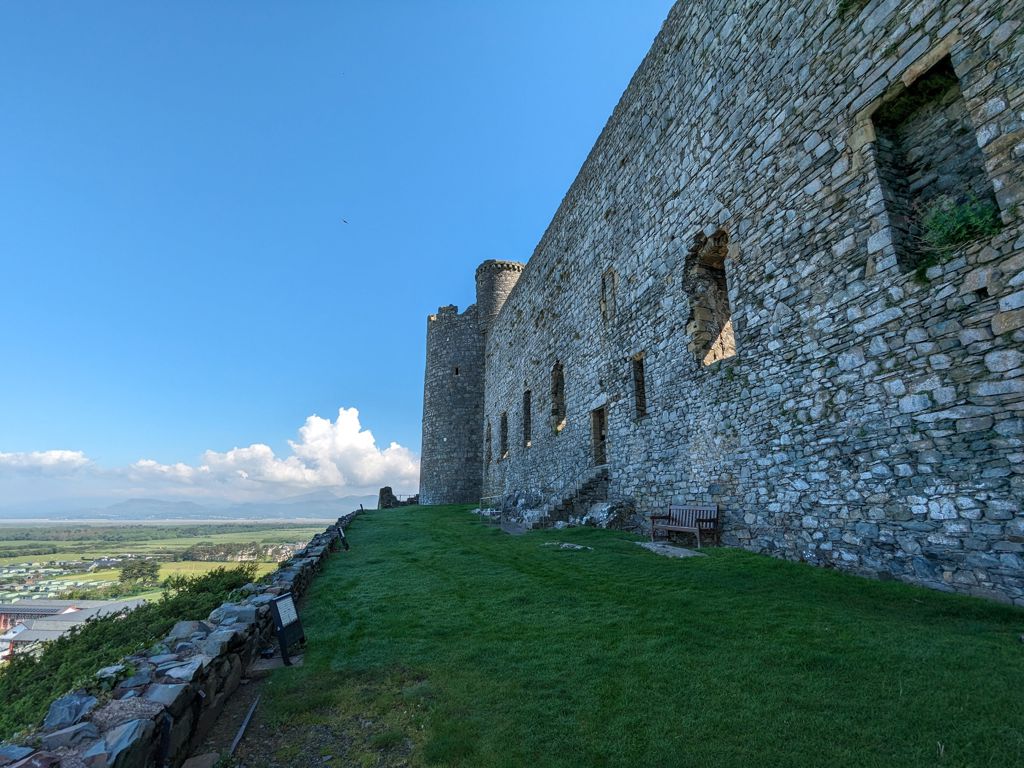
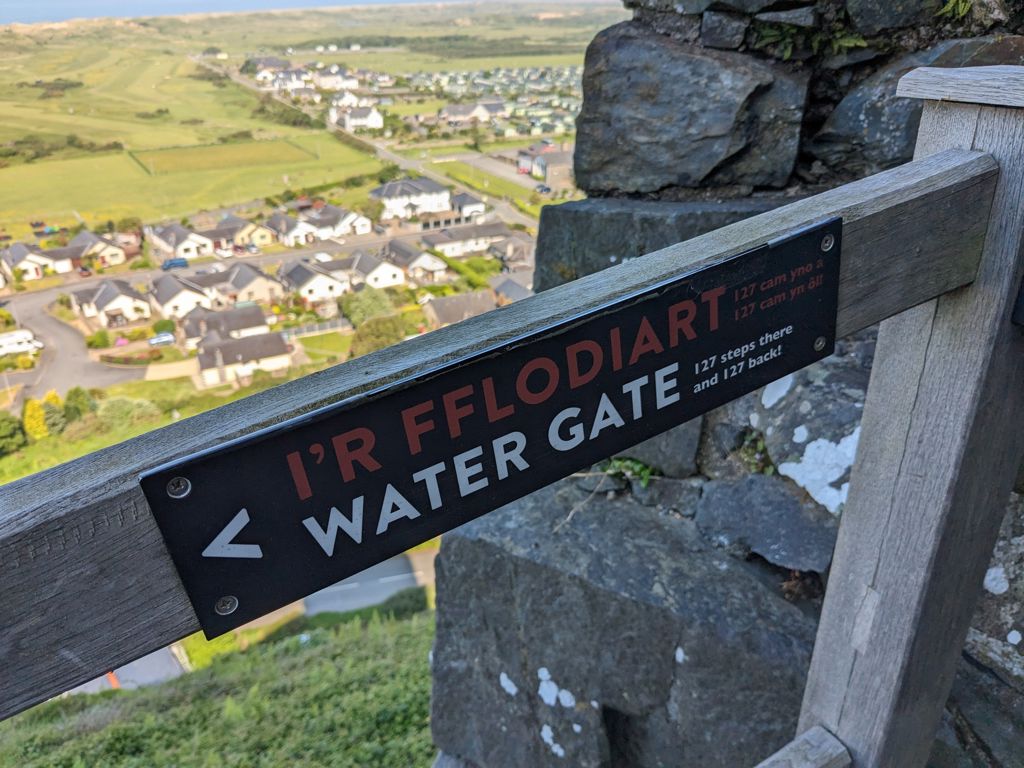
The inner ward is a square enclosure strengthened by four large round corner towers. Dominating the eastern side is a massive twin-towered gatehouse, equipped with portcullises, murder holes, and defensive chambers - regarded as one of the most impressive in Britain. Another vital structure within the inner ward was the Well Tower, containing a deep well to provide a reliable water supply during times of siege.
Additional buildings inside the inner ward included the Great Hall, chapel, kitchens, granary, bakehouse and pantry. Remarkably, construction of Harlech Castle was completed in just seven years, and by the end of 1289 it was nearly finished - just in time, as its formidable defences would soon be put to the test.
In 1294, Madog ap Llywelyn laid siege to Harlech Castle during a widespread Welsh uprising against English rule. The castle was completely cut off by land, but its innovative and strategic location proved vital to its survival. Thanks to the Water Gate and its direct access to the sea, Harlech could be resupplied by boat, allowing it to withstand the siege.
Following the suppression of the revolt, the English took no chances in reinforcing their stronghold. Additional defensive measures were implemented, including the construction of a new wall and tower to the north, further enhancing the castle's already formidable defences.
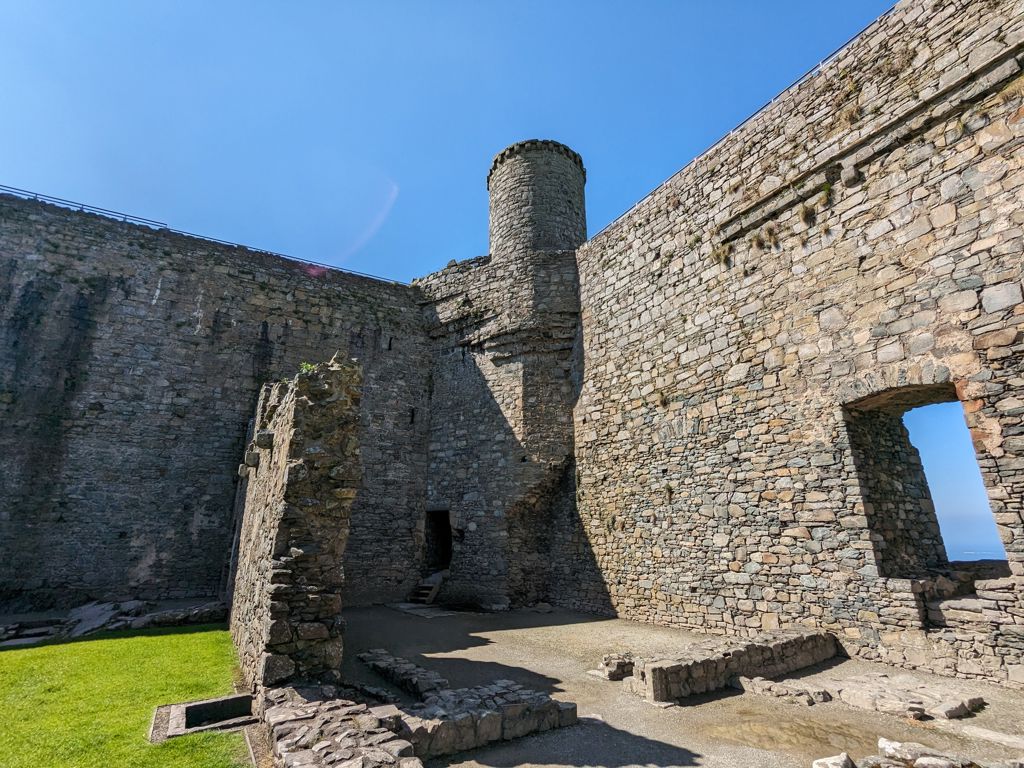
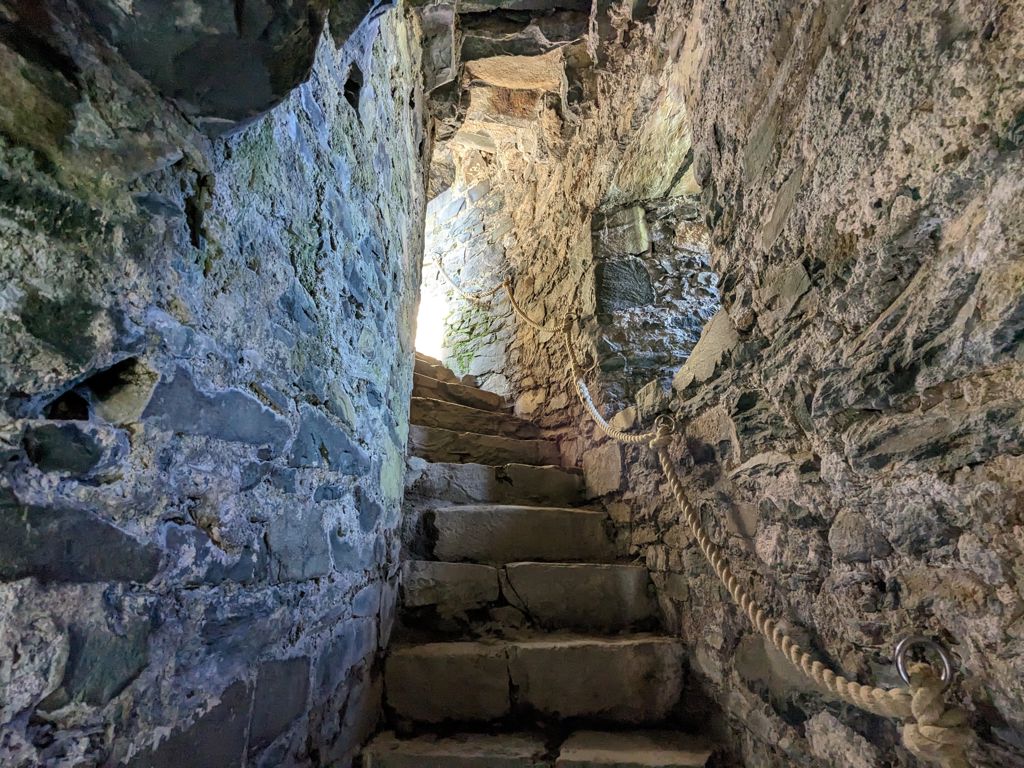
Revolt
In 1400, the great Welsh uprising led by Owain Glyndŵr erupted in defiance of English rule. By 1403, only a handful of key castles - Aberystwyth, Beaumaris, Caernarfon, and Harlech - remained under English control. Harlech, however, was poorly stocked with military supplies and unable to endure a prolonged siege. By the end of 1404, it had fallen into Welsh hands. Owain Glyndŵr made Harlech his royal court and family residence, and it is widely believed that he was formally crowned Prince of Wales within its walls.
In 1408 - 09, English forces led by Henry of Monmouth - later King Henry V - besieged Harlech. The castle came under relentless bombardment from cannons, causing considerable damage, particularly to the eastern and southern sections of the outer curtain wall. To this day, a mound of cannonballs lies scattered across the gatehouse floor, a haunting reminder of the ferocity of the attack.
Despite the onslaught, Harlech valiantly held its ground. Eventually, Henry shifted his focus to recapturing Aberystwyth Castle, leaving John Talbot in charge of the siege. As supplies inside Harlech dwindled and hope faded, the garrison surrendered in February 1409 and Harlech was back in the hands of the English crown.
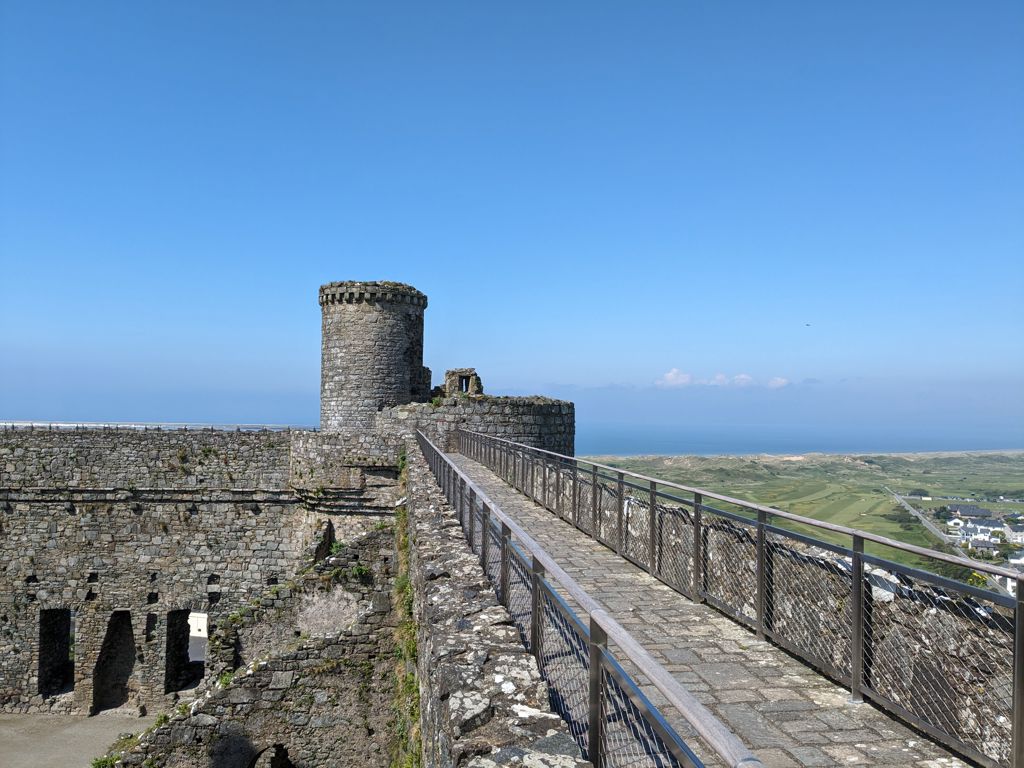
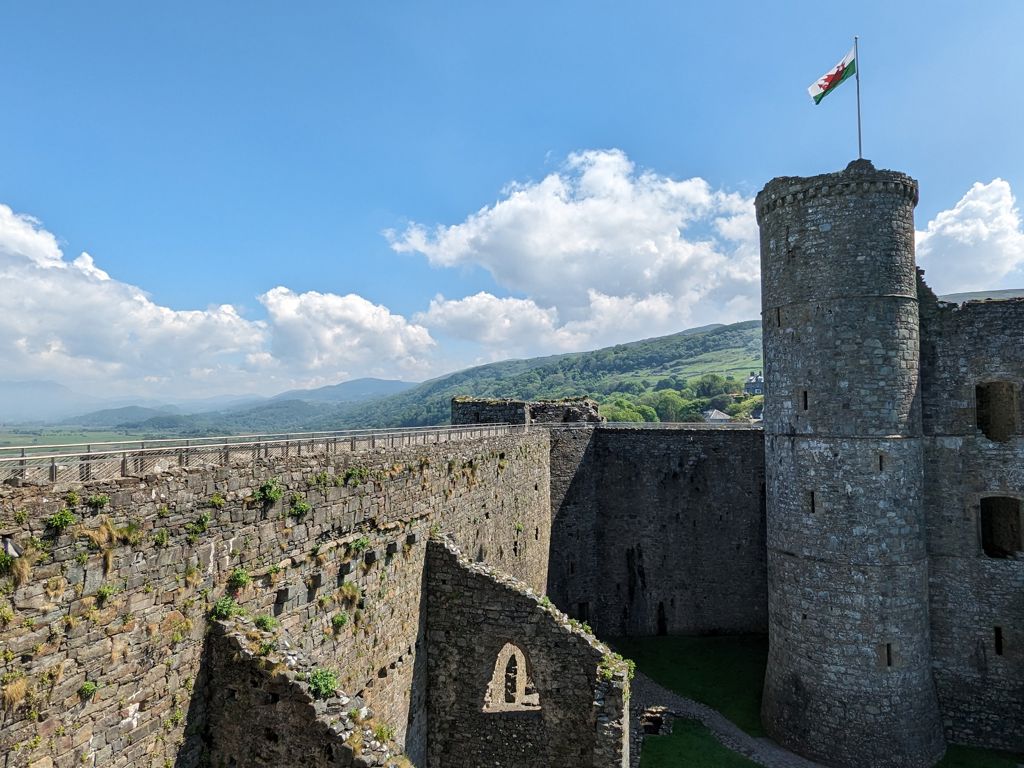
War of the Roses
During the Wars of the Roses (1455 - 1485), the bitter conflict between the House of Lancaster and the House of York for control of the English throne, Harlech Castle played a crucial and dramatic role - becoming the site of what is widely regarded as the longest siege in British history.
After the Battle of Northampton in 1460, in which King Henry VI was captured by the Yorkists, his wife, Queen Margaret of Anjou, fled with their infant son and took refuge within the walls of Harlech Castle. From 1461 to 1468, the castle served as a stronghold for Lancastrian forces under the leadership of Dafydd ap Ieuan, standing defiantly against the advancing armies of Yorkist King Edward IV.
Determined to crush the remaining Lancastrian resistance, Edward IV dispatched Lord William Herbert to secure the Welsh castles. As others fell, Harlech remained the final Lancastrian fortress in Wales, serving as a key centre for resistance and coordination. In 1464, the castle was used to plan military operations, and in 1466, Sir Richard Tunstall launched daring attacks from Harlech's secure base. The situation escalated further in 1468 when Jasper Tudor arrived with French reinforcements, using the castle as a staging ground for raids, including a significant incursion into the town of Denbigh.
This final provocation enraged King Edward IV, who ordered Lord Herbert to launch a full-scale assault on Harlech. Herbert complied, advancing with an army reportedly numbering up to 10,000 men. The siege that followed was intense and unrelenting. Despite being offered terms of surrender, the defenders refused and continued to resist for another month. However, as provisions ran low, the Lancastrian garrison was forced to capitulate. On 14 August 1468, Harlech Castle finally surrendered.
Remarkably, Dafydd ap Ieuan and his men were granted leniency - they were allowed to leave peacefully and return to their homes.
Following the siege there are no records to show that the castle was ever repaired and a survey from 1564 describes the towers and most buildings including the hall and chapel as roofless or in ruin.
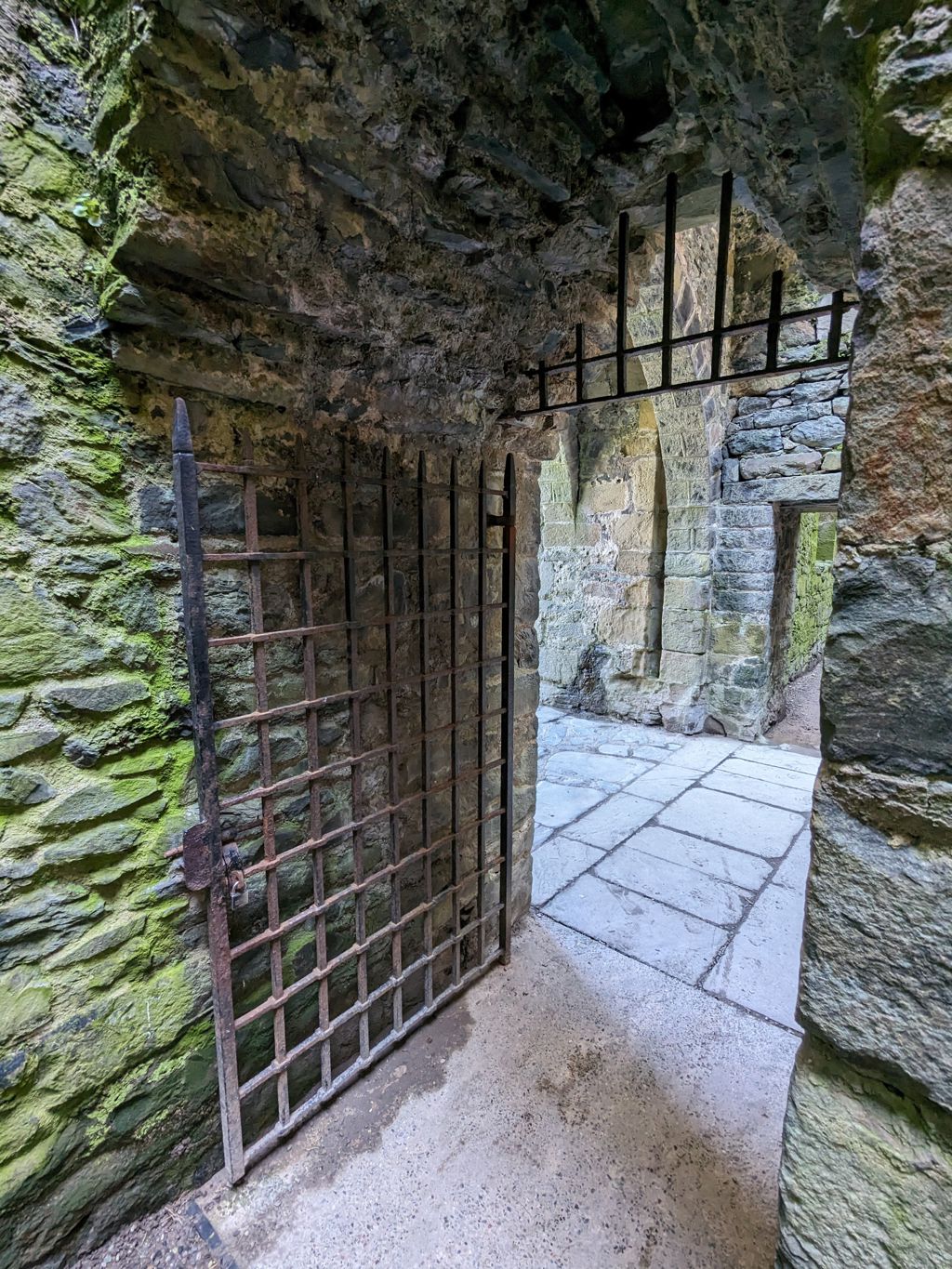
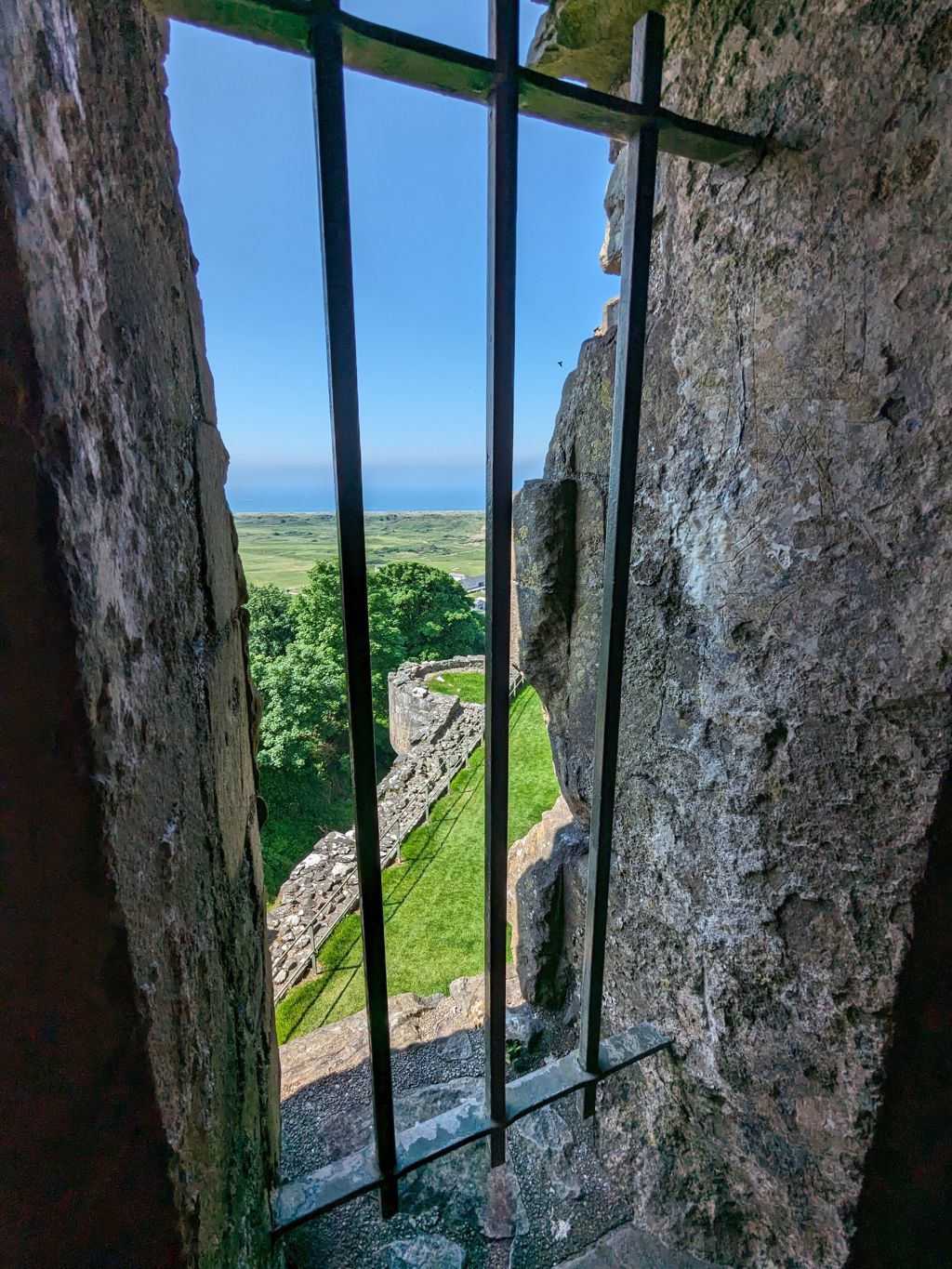
English Civil War
The outbreak of the English Civil War in 1642 plunged Britain into a period of intense conflict between the Royalists, loyal to King Charles I, and the Parliamentarians. This era marked the final chapter in the military use of most British castles, including Harlech.
From the spring of 1644, Harlech Castle was held for the Royalist cause by Colonel William Owen, commanding a modest garrison - according to one account, as few as 28 men. Despite their small numbers, Owen and his men made efforts to reinforce and repair the castle's defences in anticipation of a possible siege.
By 1646, the Parliamentarian forces were nearing total victory, but one last Royalist stronghold remained defiant: Harlech Castle. In June of that year, Major-General Thomas Mytton led a Parliamentarian army to besiege the castle. The siege lasted an arduous nine months before the garrison finally surrendered on 15 March 1647 - marking the last Royalist castle to fall and effectively bringing the Civil War to a close.
In the aftermath, Parliament ordered Harlech, like many other castles, to be slighted - intentionally damaged to prevent any future military use. However, these orders were only partially executed at Harlech. While elements such as the staircases in the gatehouse were destroyed and certain areas rendered unusable, the castle's main structure survived largely intact. As a result, Harlech defied the fate of many of its contemporaries and remains one of the best-preserved examples of a medieval fortress in Britain.
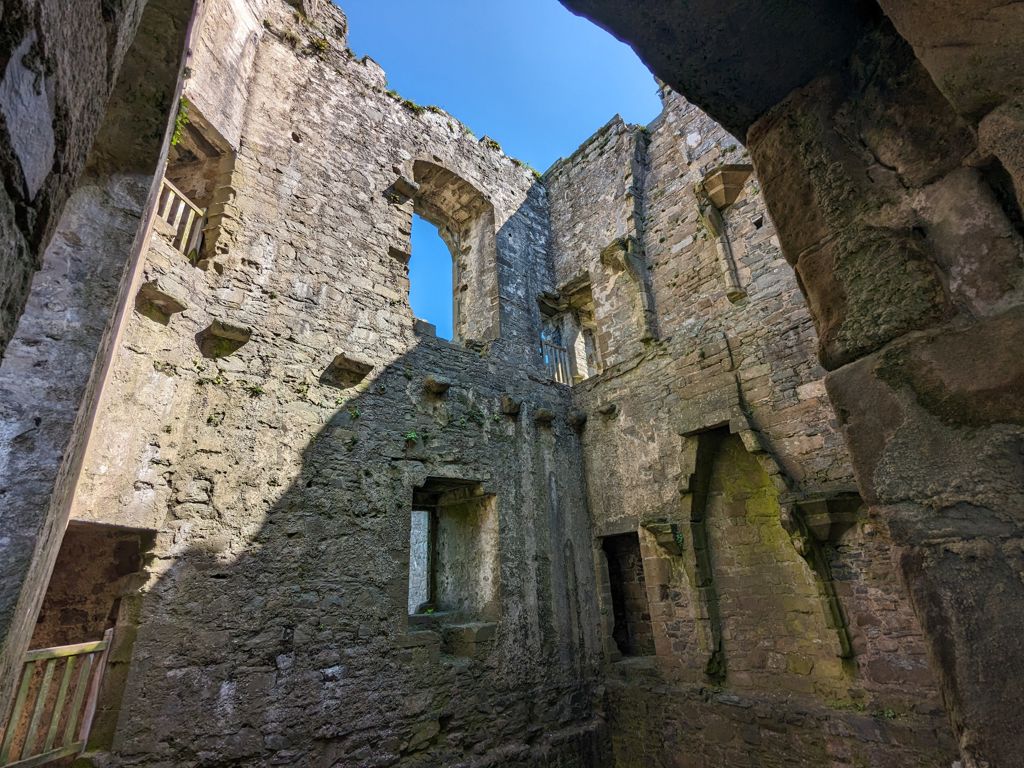
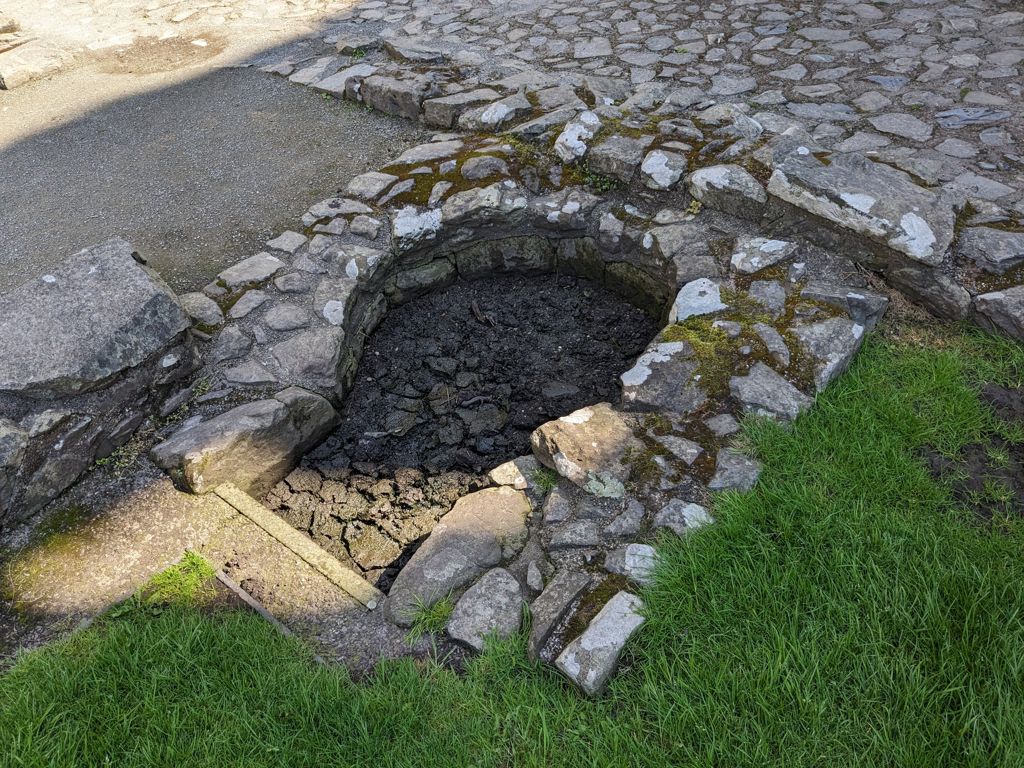
Today
Harlech castle, along with Caernarfon and Beaumaris castles and the castle and town walls of Conwy, form the UNESCO designated 'Castles and Town Walls of King Edward in Gwynedd' World Heritage Site, being 'the finest examples of late 13th century and early 14th century military architecture in Europe'.
Today, Harlech Castle stands as a symbol of Wales' turbulent history and enduring resilience, a reminder of the conflicts and conquests that have shaped the nation. Its towering walls and echoing halls continue to captivate the imagination, inviting visitors to explore its storied past and experience the majesty of medieval Wales.
